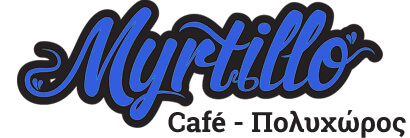
History
The KAPAPS Buildings (The Psychiko Centre for the Rehabilitation of Disabled Citizens):
The buildings in the park were constructed after the Second World War with funding from Norway and equipped with machine tools. In 1957 the complex was presented to Greece by the Norwegian Government to provide training facilities for disabled war wounded. Thanks to this invaluable donation, over the following decades hundreds of young men and women learned various crafts here (as mechanics, carpenters, watchmakers, tailors and seamstresses, shoemakers, bookbinders, etc.).
In the 1990s the attractive industrial buildings fell into disuse and soon began to deteriorate. Fortunately, however, a citizen's initiative by the residents of Upper Ampelokipi saved the adjoining Park from the encroachment of the frantic building activity of the period and succeeded in preserving it as a designated green area, while giving it new life as a focus for folk and cultural events which continue to the present day.
In 2014 the municipality of Athens under Mayor George Kaminis renovated the historic buildings of the Park with financial assistance from the European Union, and the park was presented to the citizens of Athens (February 2016) under the new name of the Park for Culture and Children. The idea for this development came from the Deputy Mayor with responsibility for Children's Welfare, Maria Iliopoulos, who envisaged the creation of a Park with up-to-date facilities that would become a hive of cultural activity especially for children.
Today the five historic buildings have been restored and have been handed over for use by groups making provision for children and vulnerable young adults. Building A has become a Nursery Our Big House (www.tomegalomasspiti.gr), Building B has become a Library for Pre-School Children (www.opanda.gr), Building C has become a Library for Primary School Children (www.opanda.gr), while Buildings D and E have become Myrtillo cafe. A new extension houses the Counselling Centre and Psychological Support Department of the municipal Nurseries and also the Upper Ambelokipi Cultural Association (www.anoampelokipi.gr
The buildings in the park were constructed after the Second World War with funding from Norway and equipped with machine tools. In 1957 the complex was presented to Greece by the Norwegian Government to provide training facilities for disabled war wounded. Thanks to this invaluable donation, over the following decades hundreds of young men and women learned various crafts here (as mechanics, carpenters, watchmakers, tailors and seamstresses, shoemakers, bookbinders, etc.).
In the 1990s the attractive industrial buildings fell into disuse and soon began to deteriorate. Fortunately, however, a citizen's initiative by the residents of Upper Ampelokipi saved the adjoining Park from the encroachment of the frantic building activity of the period and succeeded in preserving it as a designated green area, while giving it new life as a focus for folk and cultural events which continue to the present day.
In 2014 the municipality of Athens under Mayor George Kaminis renovated the historic buildings of the Park with financial assistance from the European Union, and the park was presented to the citizens of Athens (February 2016) under the new name of the Park for Culture and Children. The idea for this development came from the Deputy Mayor with responsibility for Children's Welfare, Maria Iliopoulos, who envisaged the creation of a Park with up-to-date facilities that would become a hive of cultural activity especially for children.
Today the five historic buildings have been restored and have been handed over for use by groups making provision for children and vulnerable young adults. Building A has become a Nursery Our Big House (www.tomegalomasspiti.gr), Building B has become a Library for Pre-School Children (www.opanda.gr), Building C has become a Library for Primary School Children (www.opanda.gr), while Buildings D and E have become Myrtillo cafe. A new extension houses the Counselling Centre and Psychological Support Department of the municipal Nurseries and also the Upper Ambelokipi Cultural Association (www.anoampelokipi.gr
